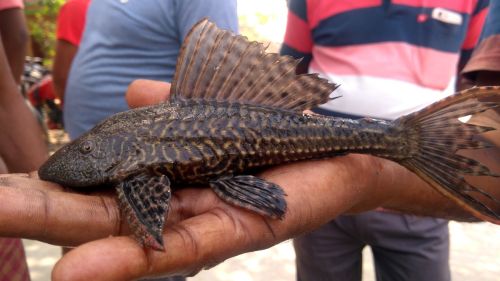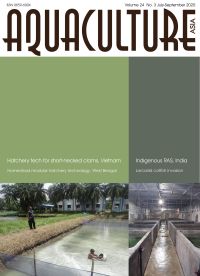Lovesome chum of the aquarium are wreaking havoc in the East Kolkata Wetlands, India
5 June 2020 | Ajmal Hussan, J.K. Sundaray, Ratna Ghosal and Suman Mallick | 1473 Downloads | .pdf | 4.35 MB | Freshwater finfish, Genetics and Biodiversity, Inland aquaculture, Environment and Sustainability, India
Many of you might have seen a peculiar creature attached face-first to the glass of freshwater aquaria. These creatures are the 'suckermouth' or armoured catfishes of the neotropical family Loricariidae. Originally native to South America, they are among the most popular freshwater fishes sold in the aquarium trade, where they are marketed as ‘plecos’ or ‘algae eaters’.
The aquarium trade pathway is the most significant source of loricariid introductions globally. When these fishes outgrow the aquarium, hobbyists find it difficult to accommodate them, and often release them into nearby freshwater sources. Once introduced, Pterygoplichthys establish very rapidly because of their competitive advantages over existing fish fauna due to their hardiness, and ability to feed on algae from all submerged surfaces.
Loricariid catfish species of the genus Pterygoplichthys have extensively invaded and proliferated in the East Kolkata Wetlands in West Bengal. Loricariids have capacity to alter the ecosystem and biodiversity of invasion sites, by physically altering the invaded habitats and by competing with native animals for food and space.
This article discusses the invasion of loricariid catfish in the East Kolkata Wetlands, and the environmental and economic impact on local fishers.
Creative Commons Attribution.

